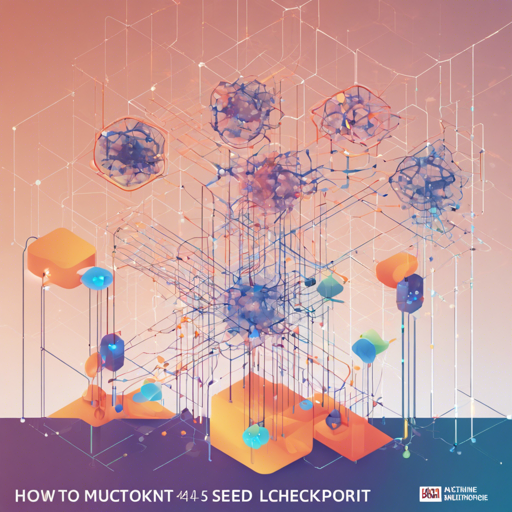In the realm of Natural Language Processing (NLP), MultiBERTs Seed 4 serves as a valuable tool for understanding and predicting language. This blog post will guide you through its usage and applications, ensuring you harness its potential effectively.
What is MultiBERTs Seed 4?
MultiBERTs is a pretrained transformer model built on vast English datasets, including BookCorpus and Wikipedia. This model is specifically designed to tackle tasks like masked language modeling and next sentence prediction. The Seed 4 checkpoint represents an intermediate stage of the model, enabling you to extract features useful for downstream tasks.
Pretraining Objectives
Understanding the pretraining objectives provides insight into the capabilities of the MultiBERTs model:
- Masked Language Modeling (MLM): In this objective, 15% of the words in a sentence are masked, and the model learns to predict these concealed words.
- Next Sentence Prediction (NSP): The model concatenates two masked sentences to predict whether they follow each other logically.
How to Use MultiBERTs Seed 4
To use this model effectively in your projects, follow these steps using Python’s PyTorch library:
python
from transformers import BertTokenizer, BertModel
# Load the tokenizer and model
tokenizer = BertTokenizer.from_pretrained('multiberts-seed-4-160k')
model = BertModel.from_pretrained('multiberts-seed-4-160k')
# Prepare your text
text = "Replace me by any text you'd like."
encoded_input = tokenizer(text, return_tensors='pt')
# Get the model's output
output = model(**encoded_input)
In this segment, we initialize the tokenizer and the model, encode the text, and send it through the model to get the desired features.
An Analogy for Understanding MultiBERTs
Imagine you are trying to decipher a forgotten book. Each word in that book represents a distinct ingredient in a recipe, and understanding how these ingredients interact is crucial for creating a delectable dish. The MultiBERTs model learns to predict missing ingredients (masked words) and can determine whether two ingredients would complement each other (next sentence prediction). Just as a chef refines their skills over time, MultiBERTs enhances its understanding of language through extensive training on vast datasets.
Limitations and Bias
As powerful as the MultiBERTs Seed 4 model may be, it carries the potential for biased predictions based on the training data. It’s essential to be aware that these biases can persist in all fine-tuned versions. To better understand any biases in this checkpoint, consider running it through the evaluation snippets provided in the limitations and bias section.
Troubleshooting Tips
- If the model fails to load, ensure that you have the correct library versions installed, especially the
transformerslibrary. - For issues related to input formatting or tokenization, double-check that your input text aligns with the model requirements (e.g., length limitations).
- For more insights, updates, or to collaborate on AI development projects, stay connected with fxis.ai.
Conclusion
MultiBERTs Seed 4 offers substantial capabilities for natural language tasks, from sentiment analysis to question answering. By understanding its workings and leveraging its strengths, you can enhance your projects considerably. At fxis.ai, we believe that such advancements are crucial for the future of AI, as they enable more comprehensive and effective solutions. Our team is continually exploring new methodologies to push the envelope in artificial intelligence, ensuring that our clients benefit from the latest technological innovations.

